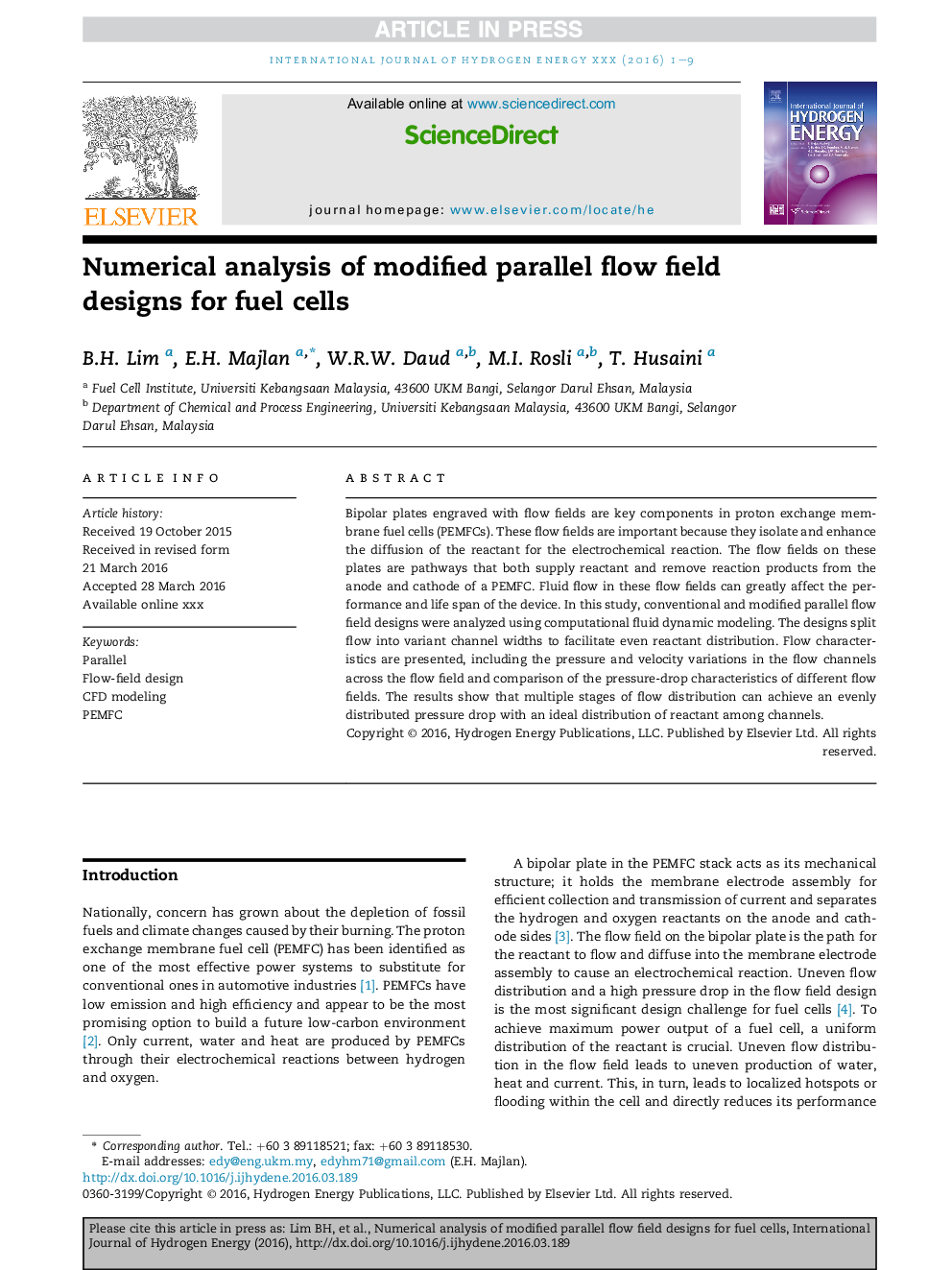| Article ID | Journal | Published Year | Pages | File Type |
|---|---|---|---|---|
| 5147845 | International Journal of Hydrogen Energy | 2017 | 9 Pages |
Abstract
Bipolar plates engraved with flow fields are key components in proton exchange membrane fuel cells (PEMFCs). These flow fields are important because they isolate and enhance the diffusion of the reactant for the electrochemical reaction. The flow fields on these plates are pathways that both supply reactant and remove reaction products from the anode and cathode of a PEMFC. Fluid flow in these flow fields can greatly affect the performance and life span of the device. In this study, conventional and modified parallel flow field designs were analyzed using computational fluid dynamic modeling. The designs split flow into variant channel widths to facilitate even reactant distribution. Flow characteristics are presented, including the pressure and velocity variations in the flow channels across the flow field and comparison of the pressure-drop characteristics of different flow fields. The results show that multiple stages of flow distribution can achieve an evenly distributed pressure drop with an ideal distribution of reactant among channels.
Related Topics
Physical Sciences and Engineering
Chemistry
Electrochemistry
Authors
B.H. Lim, E.H. Majlan, W.R.W. Daud, M.I. Rosli, T. Husaini,
